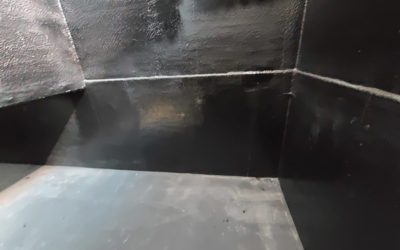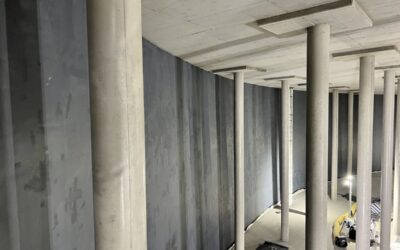Socket fusion is a popular pipe fusion method known for its versatility, flexibility, and effectiveness in a range of settings. This article explores the details of socket fusion, points of differentiation from other fusion techniques, preferred applications, as well as benefits associated with its use.
What Is Socket Fusion?
Socket fusion is a pipe joining technique that involves the use of heat to melt both the outside surface of the pipe and the inside surface of a hole cut into pipe or fitting. Once the surfaces are melted, the pipe and fitting are pressed together to form a strong and durable connection. This fusion method is widely used for joining pipes made of thermoplastic materials, such as polyvinylidene fluoride (PVDF) and high-density polyethylene (HDPE).
Socket Fusion Process
Here’s an inside look at the socket fusion process. Please remember that this process should be carried out by certified professionals to ensure safety and quality.
1. Prepare the Pipes
Cut the pipes to the desired length using a pipe-cutting tool. Ensure the cuts are clean and at right angles. Check the pipes for any dirt, debris, or contaminants. Clean the pipe ends thoroughly.
2. Prepare the Fittings
Ensure the fittings are clean and free from any contaminants. Insert the depth gauge or use a marking tool to mark the proper insertion depth for the pipe into the fitting.
3. Assemble the Fusion Machine
Set up the socket fusion machine, ensuring that the heating plate or element is clean and in good condition. Adjust the machine settings according to the pipe and fitting specifications, including heating time and temperature.
4. Heat the Pipes and Fittings
Place the pipe ends and the fitting onto the heating plate or element of the fusion machine. Ensure that the heating is uniform across the entire circumference of the pipe and fitting. Heat the materials to the specified temperature, following the guidelines provided by the pipe and fitting manufacturers.
5. Remove from Heat
Once the pipe and fitting reach the correct fusion temperature, carefully remove them from the heating plate.
6. Insert the Pipe into the Fitting
Quickly but carefully insert the heated pipe into the fitting, ensuring that it reaches the marked insertion depth. Hold the pipe in place until the joint cools and solidifies.
7. Cooling and Inspection
Allow the joint to cool completely before handling or pressurizing the system. Inspect the joint visually to ensure there are no visible signs of defects, and check for proper fusion.
8. Pressure Test
Depending on the application, a pressure test may be conducted to ensure the joint’s integrity.
9. Repeat for Additional Joints
If there are multiple joints to be made, repeat the process for each joint, ensuring proper heating and fusion.
Socket Fusion vs. Other Types of Pipe Fusion
Socket fusion isn’t the only method of plastic pipe fusion. See how it compares to other popular pipe fusion methods like saddle fusion, butt fusion, and electrofusion.
Socket Fusion
Method: Involves heating the outside of a pipe and the inside of a fitting, then inserting the pipe into the fitting, creating a secure joint when the material cools.
Advantages:
- Suitable for small-diameter pipes and fittings.
- No need for external clamps.
- Creates joints that are resistant to pull-out forces.
Butt Fusion
Method: Involves joining two pipe ends by heating them to their melting point and then pressing them together. The melted material fuses, creating a seamless, end-to-end connection.
Advantages:
- Produces leak-proof and long-lasting joints.
- Suitable for a wide range of thermoplastic materials.
- No need for additional adhesives or solvents.
- Minimal maintenance is required.
- Consistent and repeatable results.
Saddle Fusion
Method: Used to create branch connections by attaching a saddle-shaped fitting to an existing pipe. The saddle is heated, and pressure is applied to weld it to the main pipe.
Advantages:
- Ideal for creating branch connections in a pipeline.
- Requires minimal excavation, making it suitable for repairs and retrofits.
Electrofusion
Method: Involves connecting two ends by sliding and coupler over the ends. The coupler has coils inside that are heated up to make a leak-free pressure rate weld.
Advantages:
- Provides a strong, continuous connection.
- Suitable for creating complex shapes and custom profiles.
- Great for tight area repairs
When to Use Socket Fusion
Socket fusion is particularly well-suited for pipes made of thermoplastic materials. It finds widespread use in industries such as water and wastewater, gas distribution, and industrial piping systems.
This fusion method is frequently used in residential plumbing, municipal water distribution systems, and industrial processes where reliable and leak-free joints are essential. Its adaptability to various pipe sizes and configurations makes socket fusion an attractive choice for a broad range of applications.
Benefits of Socket Fusion
There are many benefits of socket fusion, the most prominent being:
- Simplicity: Socket fusion is a relatively straightforward process that requires minimal training, making it accessible to a wide range of operators.
- Space Efficiency: The compact nature of socket fusion joints makes this technique ideal for applications where space constraints are a concern.
- Cost-Effective: Socket fusion equipment is often less expensive than the specialized machinery required for other fusion methods, contributing to cost savings.
- Versatility: Suitable for a variety of thermoplastic materials and pipe sizes, socket fusion offers flexibility in application.
- Leak Resistance: The resulting joints from socket fusion are known for their high integrity and resistance to leaks when properly executed.
Contact US FUSION’s Socket Fusion Experts
Socket fusion stands out as a versatile and cost-effective method for joining thermoplastic pipes in various applications. Its simplicity and adaptability make it an attractive choice for projects where space efficiency and reliable connections are crucial. However, like any fusion technique, proper training and execution are essential to ensure the integrity and longevity of the joints.
If your project requires any type of on-site plastic fusion work, the US FUSION team is here to serve you. Our technicians are ASME Section IX certified and have nearly four decades of HDPE and welded plastic pipe fusion experience. Get in touch to learn more about how we can help, or request a free quote online here.







